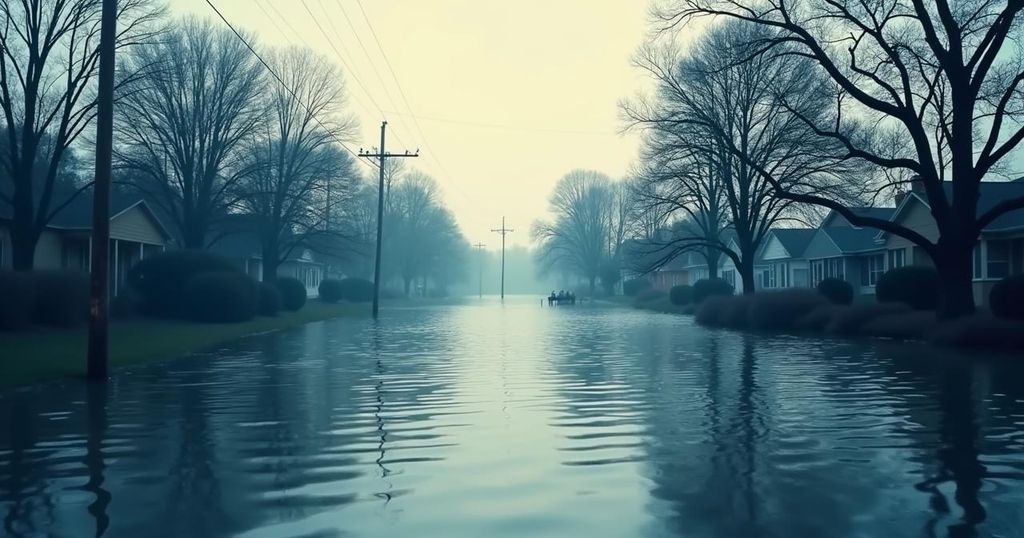Hurricane Helene’s Devastating Impact: Flooding and Fatalities in the Southeast
Hurricane Helene, a Category 4 storm, caused severe damage across the Southeast, leading to nearly 100 deaths. Recovery efforts in North Carolina face challenges due to flooding and destroyed infrastructure, resulting in shortages of essential supplies. A federal disaster declaration has been issued to assist affected areas.
Hurricane Helene made landfall in the Big Bend region of Florida late Thursday night as a Category 4 hurricane, unleashing winds of 140 mph and severe storm surges that resulted in widespread destruction across several Southeastern states. In the aftermath, recovery crews have been tirelessly working to clear debris, restore power, and deliver essential supplies to residents who have found themselves stranded due to the devastation left in Helene’s wake. Reports indicate that nearly 100 fatalities have been confirmed across six states, including North Carolina, where the toll has been particularly severe due to significant rainfall and flooding. The intensity of Hurricane Helene has led to catastrophic flooding, especially in North Carolina, where Governor Roy Cooper described the storm as unprecedented, noting rainfall accumulations of 10 to 29 inches in mountainous areas. The aftermath has raised grave concerns regarding the rising death toll, with officials indicating that at least 38 people have died in North Carolina alone. Additionally, obstacles persist for first responders as they attempt to reach those who remain cut off from necessary resources like food, fuel, and water due to blocked roads. In response to the crisis, President Biden has provided a Major Disaster Declaration for North Carolina, deploying over 800 FEMA staff and resources to assist in recovery efforts. Despite restoring power to some areas, the region grapples with supply shortages, leading to heightened tensions in communities. There is an ongoing struggle to manage resources fairly amid the scarcity of fuel and essential supplies as local officials continue to address the aftermath of Helene’s catastrophic impact. Further south, the storm surge experienced along Florida’s Gulf Coast has resulted in significant property damage, with Treasure Island being notably affected where several fatalities have been reported. Residents in impacted areas are now left to navigate the daunting recovery and rebuilding process following this devastating natural disaster.
The article discusses the severe impact of Hurricane Helene, which made landfall as a powerful Category 4 hurricane and resulted in catastrophic flooding and destruction across multiple states in the Southeast, particularly affecting Florida and North Carolina. The extensive rainfall and storm surges have led to widespread loss of life, infrastructure damage, and ongoing recovery efforts. The state of emergency and subsequent federal disaster declarations have been pivotal in addressing the needs of affected communities as they begin to recover from one of the most destructive storms to hit the region in recent history.
In summary, Hurricane Helene has inflicted devastating damage on the Southeast, particularly in North Carolina and Florida, resulting in nearly 100 confirmed fatalities and significant disruption to daily life. Recovery operations continue to face challenges due to severe flooding, damaged infrastructure, and supply shortages. As local and federal authorities mobilize resources to aid in recovery, communities are navigating the complex aftermath of this unprecedented natural disaster.
Original Source: www.foxweather.com




Post Comment